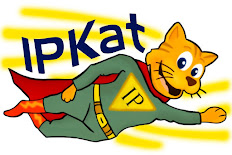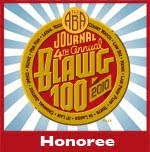Implausibly incredible or just plain insufficient?
![Implausibly incredible or just plain insufficient?]()
Reviewed by
Stephen
on
Wednesday, May 31, 2017
Rating:
5
Never Too Late: If you missed the IPKat last week!

Reviewed by
Cecilia Sbrolli
on
Wednesday, May 31, 2017
Rating:
5
‘Display At Your Own Risk’: A Tour into ‘Copyright Surrogacy’

Reviewed by
Mathilde Pavis
on
Monday, May 29, 2017
Rating:
5
Judge Alsup driving forward Uber-Waymo trade secret dispute amongst "red flag" disclosure hearings

Reviewed by
Annsley Merelle Ward
on
Sunday, May 28, 2017
Rating:
5
The meaning of "red carpet" in two and three dimensions: from Ancient Greece to Cannes

Reviewed by
Neil Wilkof
on
Sunday, May 28, 2017
Rating:
5
Appointed Person issues first appeal decision in a design case

Reviewed by
Eleonora Rosati
on
Sunday, May 28, 2017
Rating:
5
Friday Fantasies

Reviewed by
Tian Lu
on
Friday, May 26, 2017
Rating:
5
Life as an IP Lawyer: Singapore

Reviewed by
Annsley Merelle Ward
on
Thursday, May 25, 2017
Rating:
5
![Implausibly incredible or just plain insufficient?]() Reviewed by Stephen
on
Wednesday, May 31, 2017
Rating:
Reviewed by Stephen
on
Wednesday, May 31, 2017
Rating:










![[Guest post] Can AI be considered a PHOSITA? Policy debates in the US and the EU](https://blogger.googleusercontent.com/img/b/R29vZ2xl/AVvXsEggxDO6mW5r4n3-06Af5ckmIaMIhzgPJBoDP8AUsSYXY2zajUQt1ObGVn_GhCgidbG_YDVnybQuJ5XoAjjBG9Ws2xJWDQHNPMrLkn526SWIG371X_Kjt1E8tJmn8Ae_20Phyphenhyphen09JeuUOhhTR3aZE9lMRQlqHGQGcAWGxlo91rrKcLk0AfUjWCvw6RQ/s72-c/Two-cats-eating.jpg)








![[Guest post] Can a trademarked mascot drink, smoke, and spray graffiti under the banner of artistic expression?](https://blogger.googleusercontent.com/img/b/R29vZ2xl/AVvXsEgbyaylrzV0_WRCvj7gUUBCmaRpZYmu5l_yll7jWk32LFKedtZU9fXBnkBocu6wOPN1hNdAcmsMEbripjNMCtI5Lr3VCYfbl9_PJqCuO2Rq4biGkULEo_x_t06S-N5vBIFdAAjcR0L4Q1knvR2ZFxU_F7ZtqRmDrWbWhA7dfSvRjdYwbSx_6oSPvQ/s72-w121-c-h200/Screenshot%202024-04-17%20at%2012.32.14.png)


